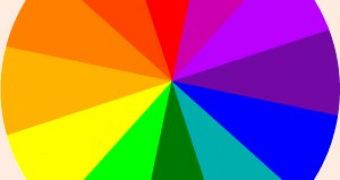We've talked about a great deal of styles and trends on this page, although we haven't yet dealt with the sometimes simple, sometimes subtle and sometimes downright complicated art of color combination. It's quite easy to say "this top and these pants don't match" ? and for most of us, it's become somewhat second nature to tell what goes well with what and which combinations are an immediate no-no ? however, we have to admit that many times, fortunate color combinations are mostly successful guesswork and a lot of personal flair. Let's have a look at some of the basic rules of color matching, and see how much of what we know is fact and how much is just the result of an inborn sense of style.
As we all know it, fashion is an art and color matching is a skill we must all possess in a certain degree in order to be able to match the clothes in our wardrobes and put together stylish outfits, appropriate to our moods and to just about every occasion. So, let's start with the beginning. As you probably know, there are three primary colors ? the only colors that cannot be obtained by mixing other colors and which are at the basis of every color combination: red, yellow and blue. When you mix two primary colors together, you obtain the three secondary colors:
Purple = red + blue Orange = red + yellow Green = blue + yellow
These colors are all arranged in circular fashion on what is largely known as the "color wheel" (see photo). Keep in mind that the final hue of each secondary color depends on the exact shade of red, blue or yellow used and on the amount of primary colors combined. The neutral colors are brown and gray along with black and white. Brown and gray are obtained by mixing all three primary colors together in various amounts.
The basic thing to know is that our wardrobes need to be built around staple clothing items in neutral colors, which can be dressed up or down with more colored pieces and accessories, depending on the occasion, season and so on. There are two basic types of color combinations we can make: monochromatic (combining lighter and darker shades of the same basic hue) and analogous ? colors that are next to one another on the color wheel. We'll discuss more on this in a coming article ? so stay tuned.

 14 DAY TRIAL //
14 DAY TRIAL //